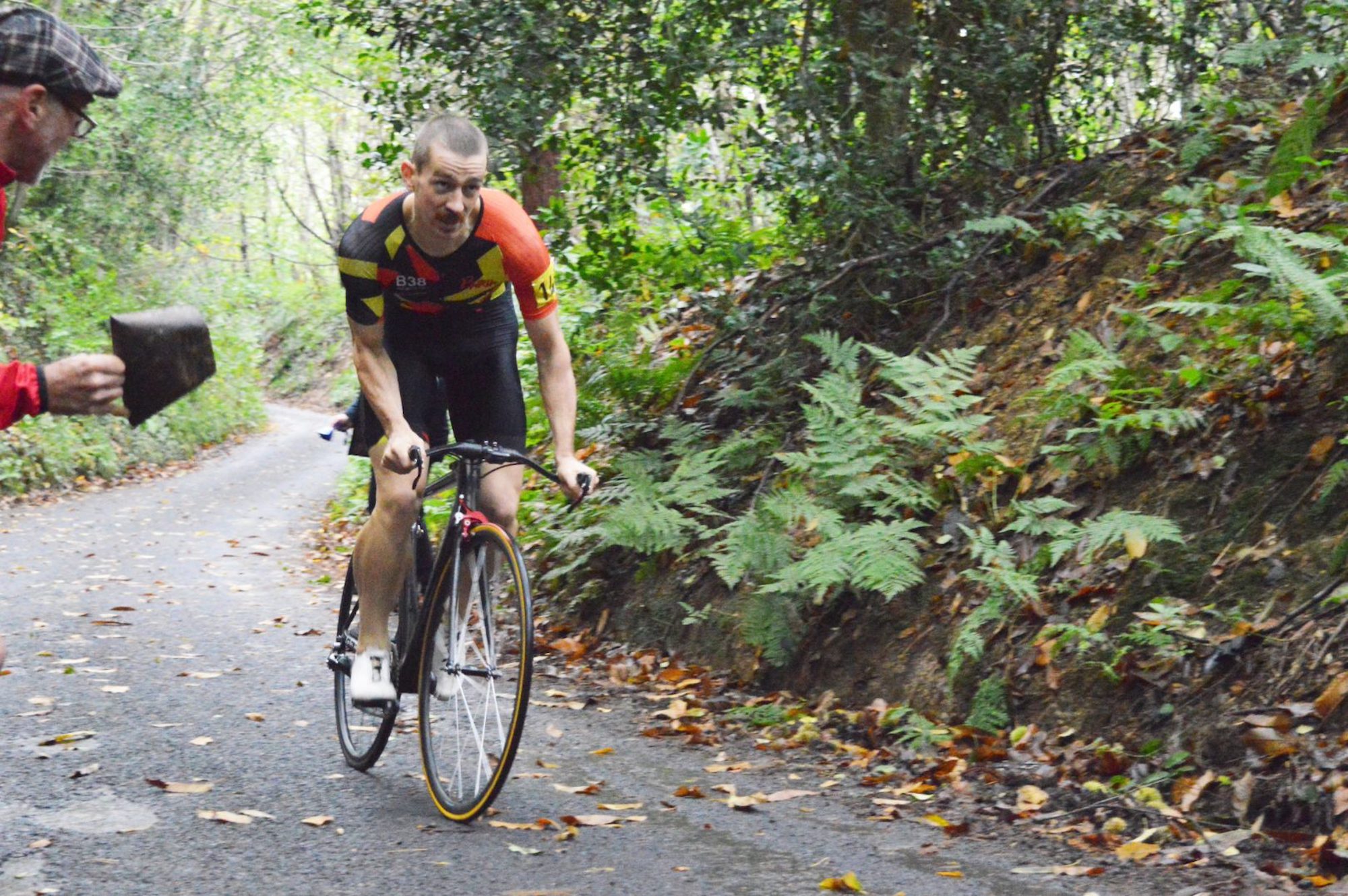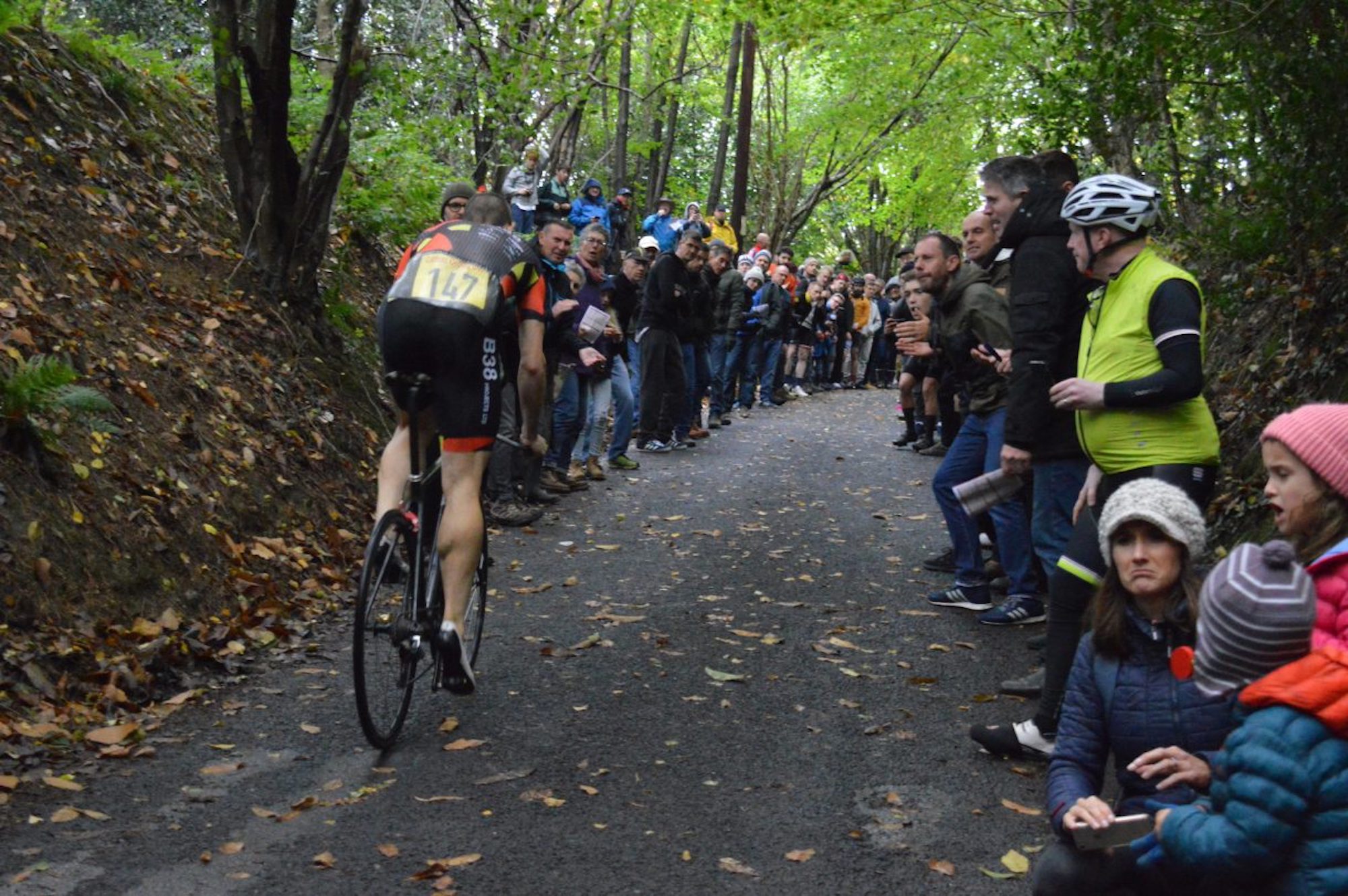Hill climbing: The secrets of how anyone can go faster uphill
Jim Cotton speaks to champion climbers to find out how we can all go faster uphill - and maybe bag a KoM along the way

(Photo by Mark Bullimore/Getty Images)
Now that the road racing, TT and sportive seasons have ended, you may want to put your summer form to a different kind of use. Hill-climb racing may seem a slightly bonkers niche, with its backwards caps, stripped-down bikes and whippet-thin competitors — but perhaps they’re on to something. You can’t fight gravity, but you can keep very fit trying!
Why not try out this autumnal cycling pursuit and test yourself uphill — even if it’s just for fun against your mates? Your end-of-season fitness won’t last forever so now is the time to go smash some segments and set some PBs on your local climbs. To help you in your quest for that elusive KoM, we spoke to some national hill-climb champions past and present to find out how to train your body and mind to ride uphill very, very fast.
>>> Subscriptions deals for Cycling Weekly magazine
Even at the top level, Strava is a key tool for many hill-climbers as they look to reach their peak climbing form. We asked two former national hill-climb champions, Joscelin Lowden and Adam Kenway, why they seek motivation through the platform.
“Chasing segments is brilliant training for hill-climbs,” says 31-year-old Lowden. “When I’m targeting segments, it’s as much about beating my own time as it is about getting a QoM. Like a lot of people, I need a competitive element to really motivate me to push the pain barriers enough to be in the best shape.”
Kenway, 32, agrees: “A lot of my hill-climb training revolves around hunting down KoMs or segment PBs. It feels similar to having a number on your back and racing. Knowing I’m being ranked always helps me get that bit more out of myself, ensuring I achieve the intensity I need.”
What is climb-specific fitness?
The latest race content, interviews, features, reviews and expert buying guides, direct to your inbox!
When you’re looking to hone your hill-climb form, it all boils down to your VO2 max — your maximal oxygen uptake — according to coach Matt Clinton of Clinterval Coaching, himself a former national hill-climb champion and multiple podium-placer. “You need to get that VO2 max as high as you can, and that is best done with short, full-gas efforts of between 30 seconds and five minutes.”
>>> Cycling Weekly is available on your Smart phone, tablet and desktop
Although most of the climbs you’re targeting (assuming you’re in the UK) will be between three and eight minutes, repeats of super-short maximal sprints — for example, a 30 seconds on/30 seconds off workout — are a great way of boosting your VO2 max power. Alternatively, simply ride up each climb on your ride as fast as you can. When you’re doing longer full-gas efforts, allow yourself a full recovery between each one, letting your body recharge and enabling you to give it your absolute all each time.
It might sound obvious, but do as much hilly riding as you can, as this will help your muscles adapt to achieve the torque required for full-gas climbing. What if you live in the middle of the Fens? “If you live somewhere flat, even a two to three per cent gradient at full-gas in a big gear can be a reasonable replication,” advises Clinton.

There’s more to being fast uphill than just short-burst power. You need to maximise your climbing form to ensure you eke out every watt of training gain. In preparing for his 2018 junior national title, 17-year-old Joe Baker was intent on achieving total efficiency.
Check your form
“It’s not that easy keeping good form when going totally all-out,” he says. “I wanted to ensure that good form came naturally to me, so I didn’t need to think about it when competing. My training involved a lot of focus on my movement and form, whether seated or standing.”
For most of us, getting out of the saddle allows us to briefly increase our power output and break up the monotony of sustained seated hard effort. However, standing on the pedals is generally less efficient and makes it difficult to maintain a good cadence. “An unprepared rider will get caught out and blow up if they stand for too long,” says Clinton. “You’ll definitely benefit from practising your technique out of the saddle and understanding how long you can do it.”
For a hill-climb event, many participants forgo a bike computer to save weight. In an explosive effort, it’s pain rather than a power figure that best guides your effort.
“You need to learn what effort level feels sustainable for you and be able to interpret what your legs are telling you,” says Lowden. For Kenway, it’s about “being able to accurately perceive your level of effort as a pacing tool” which “means you can feel your way through a climb, understanding when you need to back off or push on.”
Pacing yourself by means of target power, watching your computer screen, runs the risk of misleading you — you never quite know what power you’re capable of producing ‘on the day’. With enough practice, the best hill-climbers develop the ability to ‘feel’ how fast they can go. As such, preparation efforts in the weeks before your PB attempt, up to around 10 days before, can be a great way to get a feel for the true meaning of pain.
The golden rule is not to start too fast, which Clinton says is “the most common mistake I see riders making.” This is where a power meter can be useful — setting a wattage ceiling for those initial 15-20 seconds can save you from crawling your way through the final hundred metres.
Processing pain
Semi-conscious riders, with helpers on hand to catch them, and sick buckets are commonplace hill-climb finish lines — testament to the depths of effort. And if you want your shot at immortality on a Strava leaderboard, you need to be prepared to hurt just as much. While the good news is that there are ways to manage the suffering required to take a KoM, the bad news is that you have to find what works for you through practice: repeatedly putting yourself in the hurt zone.
“Learning how to get every little bit out, and how to handle the mental process, is a key part of my physical training for hill-climbs,” says Lowden. The hard way is the only way, Kenway agrees: “By making my hill-climb training super-hard and chasing KoMs, it helps me develop ways to handle the sensations in a race, which helps me relax.”
Clinton finds that mentally splitting down the climb into chunks makes the intensity more tolerable. “Think solely about the current section, concentrate only on what’s coming within that part, and forget everything else.”

Finding that zoned-in headspace relies on knowing the climb inside-out. Baker forms a plan, deciding in advance when to use certain gears and when to stand on the pedals, thus removing doubts and distractions. “All my best performances have been when my head is empty,” he says. “I just repeat a key mantra in my mind and focus on that.”
Lowden is able to disassociate his mind from his real-time physical experience. “You have to be able to disconnect from the idea of time. It’s almost like trying to step away from your body, like meditation almost.”
Get competitive
In other words, you have to be so immersed in the moment that there’s no room for extraneous thoughts to creep in and take over. That said, it seems that everyone has a slightly different method for achieving this state — which only practice can perfect.
Whatever your coping method, it’s human nature that you’ll be willing to hurt more when you’re competing — and even a bit of friendly rivalry can be enough to ensure you go as deep as is required to find your potential.
“When chasing KoMs, it helps if you can get competitive with your mates,“ says Baker. “Fighting to take a segment from a friend is a great motivator to really go deep.”
So, round up riders at a similar or better level than you, and make a point of picking off their best segment times, one by one. But remember, a Strava segment isn’t worth losing a friend over — or is it?
This feature originally appeared in the print edition of Cycling Weekly, on sale in newsagents and supermarkets, priced £3.25.